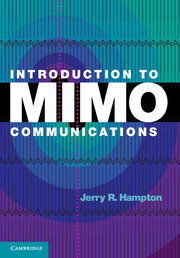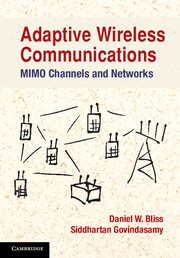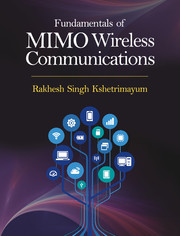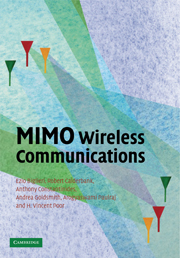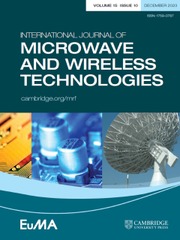Introduction to MIMO Communications
This accessible, self-contained guide contains everything you need to get up to speed on the theory and implementation of MIMO techniques. In-depth coverage of topics such as RF propagation, space-time coding, spatial multiplexing, OFDM in MIMO for broadband applications, the theoretical MIMO capacity formula and channel estimation will give you a deep understanding of how the results are obtained, while detailed descriptions of how MIMO is implemented in commercial WiFi and LTE networks will help you apply the theory to practical wireless systems. Key concepts in matrix mathematics and information theory are introduced and developed as you need them, and key results are derived step-by-step, with no details omitted. Including numerous worked examples, and end-of-chapter exercises to reinforce and solidify your understanding, this is the perfect introduction to MIMO for anyone new to the field.
- Introduces MIMO techniques in a rigorous yet accessible way
- Includes key details and steps often omitted from discussion
- Accompanied by solutions to selected problems, and MATLAB® solutions for instructors
Reviews & endorsements
"This is a well-organized, comprehensive treatise on MIMO principles, methods, and applications. While many concepts are introduced in intuitively pleasing ways; the integration of detailed step-by-step mathematical developments of MIMO principles, propagation models, channel characterizations, and applications of MIMO in commercial systems adds tremendous depth and understanding to the concepts. After studying this text, if readers have interests in topics not covered, they will very likely be able to understand or author for themselves advanced MIMO literature on such topics."
David Nicholson, Communications consultant
"This completely self-contained book provides an excellent textbook for an introductory graduate level course on MIMO. It will also be an invaluable tool for experienced engineers who need to quickly get up to speed on this new and rapidly evolving technology. The book is clearly written, easy to understand, and packed with numerous examples of both commercial and military applications of MIMO. In addition to providing rigorous derivations of the key MIMO performance equations, the author provides intuitive justification for each result."
John D. Oetting, Johns Hopkins University Applied Physics Laboratory
"MIMO has proven to be one of the key advances in wireless communications from the 20th century. This text by Hampton offers a self-contained overview of MIMO, appropriate for an advanced undergraduate or early graduate course, following digital signal processing or digital communications and the fundamentals of stochastic processes. The text lays out the basic ideas in a clear progression, and integrates problems and Matlab exercises. The book achieves a nice mix of theory and example, and includes a final chapter on application of MIMO in WiFi and LTE standards. Hampton has produced a text that will broadly appeal to wireless communications engineers, all of whom should be informed on this topic."
Brian M. Sadler, Army Research Laboratory
Product details
No date availableAdobe eBook Reader
9781107597167
0 pages
0kg
110 b/w illus. 40 tables 55 exercises
This ISBN is for an eBook version which is distributed on our behalf by a third party.
Table of Contents
- 1. Overview of MIMO communications
- 2. The MIMO capacity formula
- 3. Applications of the MIMO capacity formula
- 4. RF propagation
- 5. MIMO channel models
- 6. Alamounti coding
- 7. Space-time coding
- 8. Spatial multiplexing
- 9. Broadband MIMO
- 10. Channel estimation
- 11. Practical MIMO examples
- Appendices: A. MIMO system equation normalization
- B. Proof of Theorem 5.2
- C. Derivation of Eq. 7.9
- D. Maximum likelihood decoding rules for selected OSTBSs
- E. Derivation of Eq. 8.68
- Appendix F. Parameters for the non-unequal HT modulation and coding schemes in IEEE 802.11n
- References
- Index.

